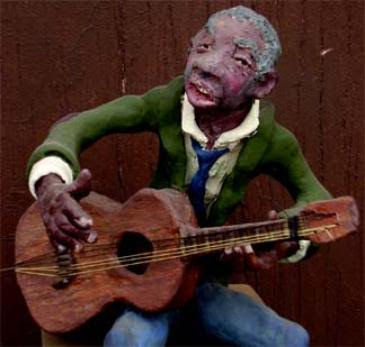Blues For Breakfast -- polymer sculpture

The sculpture has been setting around a little while. I finally repainted her and mounted her on a board. The miserable heat outside is still forcing me to catch up on some inside projects. Her bed and guitar are not polymer clay but are cut from Luan wood. The mattress is a piece of Luan covered with linen (stuffed with a polymer filler) and coated with white glue and water for stiffness. I've been wanted to work on papercrete projects, but I swear it's either too hot (and humid) (heat + humidity = "heat index," which has generally a good ten degrees above the actual temperature), or it's raining. We've had heat index temps as high as 108. This has got to be one of the hottest, wettest summers on record down here in good old South Carolina. Only the mosquitoes are happy.


